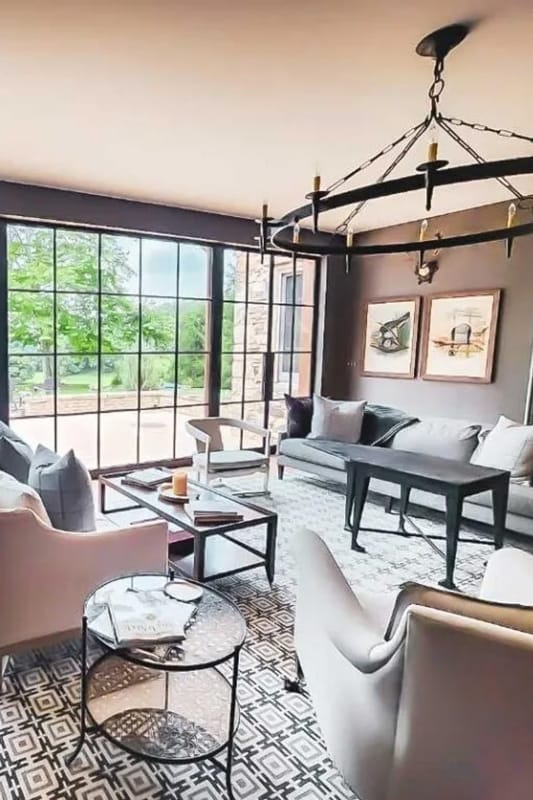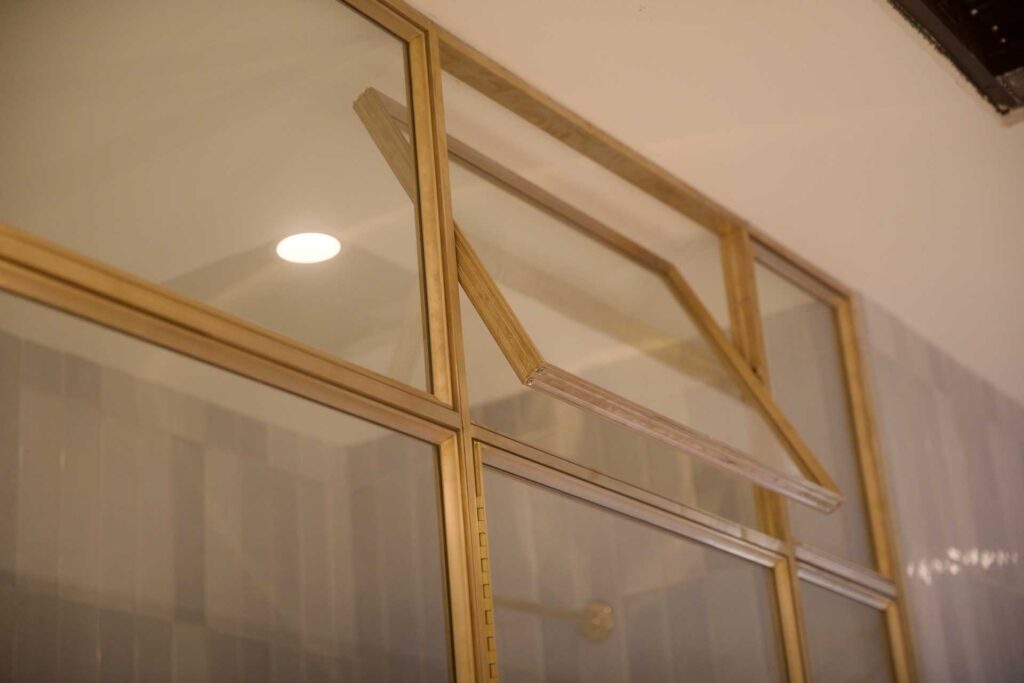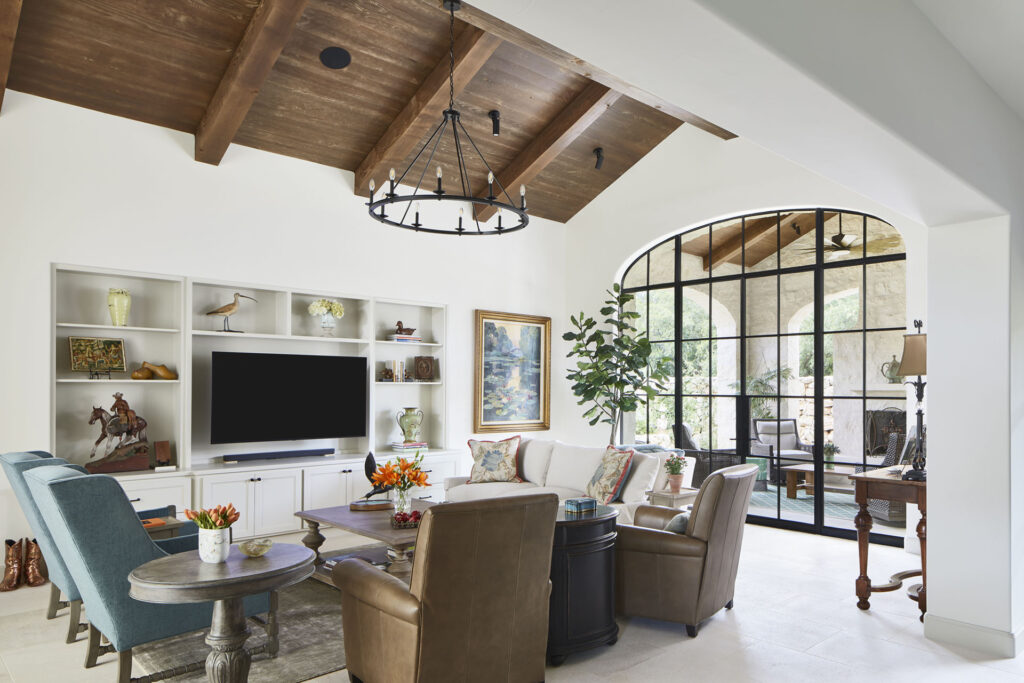Fenestration design is a key element of great architecture – after all, windows make up a significant percentage of any building envelope.
The number, size, shape and profile of exterior windows and doors can go a long way towards determining the overall character of a building – and nowhere is this more apparent than in heritage architecture.
Throughout history, as manufacturing technology has advanced, window design has also evolved. This means that certain colonial architecture periods – for instance French and Dutch colonial, or Georgian – can be identified or even defined by the style of windows used.
For architects and homeowners looking to restore heritage buildings – or pay homage to classic period style in new build properties – selecting the right windows and doors is key.
Let’s take a look at some distinct types of American heritage architecture, and explore how bronze windows and doors can support sensitive restoration and authentic reproduction projects.
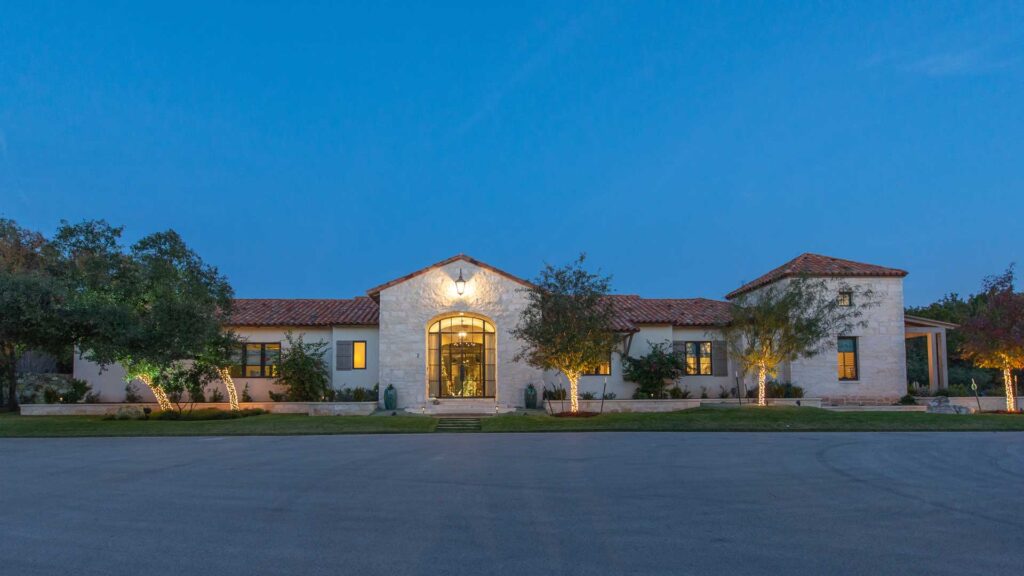
What are the main types of heritage architecture in the United States?
The architectural evolution of the United States truly began in the early 1600s when the first colonisers arrived from Europe, bringing with them their own construction styles and methods, and adapting those to suit the climate and materials they discovered on arrival.
Early colonial
Early colonial styles included French and Dutch architecture with a focus on practicality – simple square or rectangular buildings built using timber frames, with large central chimneys to heat multiple rooms, steep roofs to shed rain and snow easily, and small, multi-paned windows due to the difficulty of producing large glass panes.
Spanish colonial style was characterised by low, flat roofed-buildings with stucco walls, small windows and walled courtyards designed to keep interiors cool at southerly latitudes.
Georgian
By the 1700s, English colonial styles were beginning to take root – typefied by the classic ‘New England’ style still seen up and down the Atlantic coast. Constructed using abundant local lumber, these houses are easily identified by their symmetrical facades, with central doorways and perfectly aligned upper and lower windows. As with earlier styles, Georgian windows are easily identified by small, individual leaded lites – the technology to produce larger sheets of glass was still some decades away.
Queen Anne
Queen Anne architecture is an evolution of Victorian style, which in itself is inspired by Gothic architecture. This period was characterised by very ornate styling, with large bay windows, dormers, turrets and covered porches. Windows were getting larger, although small panes were still common – double hung windows became more popular and often the upper pane had small individual lites to add detail, with plain glass on the lower pane.
Coinciding with the Industrial Revolution, Victorian style is also associated with the utilitarian style of the old factory windows our modern-day window profiles are based on. These are often specified into contemporary homes.
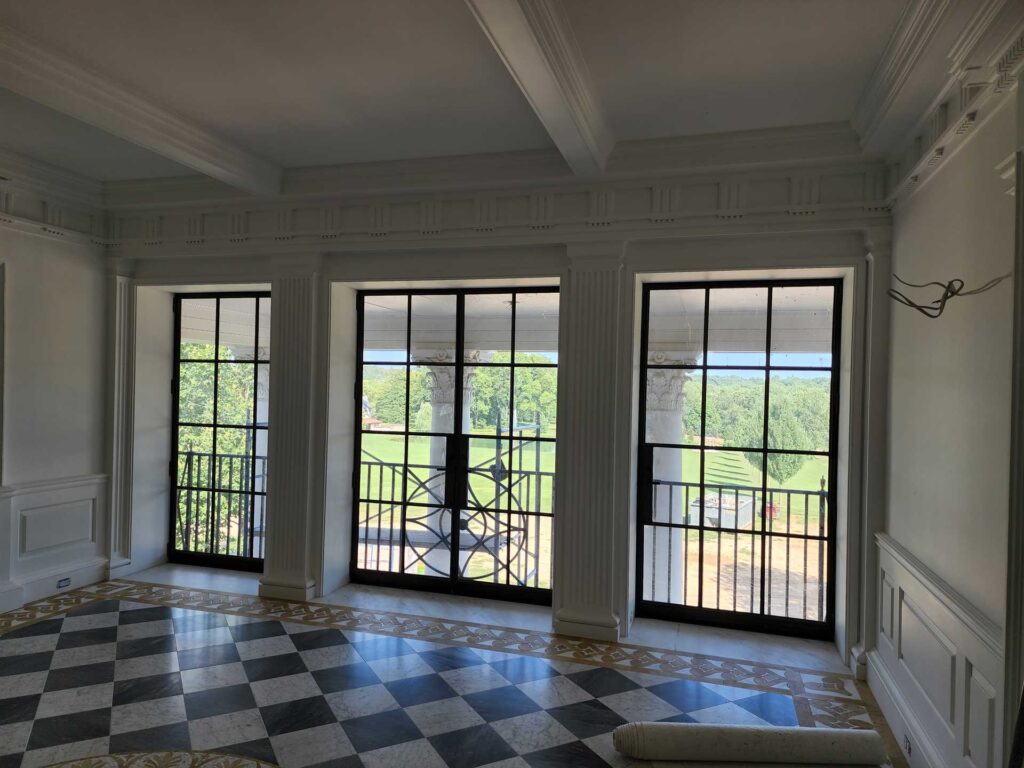
Revival
As time went by and America’s architectural heritage became more nuanced, people started looking to the past for inspiration and new versions of old styles began to emerge. Greek, Tudor and Spanish Colonial styles all saw a revival at one time or another, with new materials and techniques allowing these old style to evolve slightly each time.
Why is fenestration important in heritage buildings?
If you’re restoring a heritage building – even if that building is not of historic or architectural significance in a legal sense – it’s still important to be faithful to the original character of that building where possible.
Over the last century, a lot of architectural heritage has been lost because homeowners needed to improve energy efficiency in old buildings, but didn’t have access to fenestration systems that could combine performance with architecturally correct aesthetics – think wooden or uPVC windows installed into homes that originally had metal windows. Appropriate fenestration preserves the character of the original building for future generations, and blends new features or extensions into the existing footprint in a sympathetic way.
In reproduction architecture, choosing the right windows is arguably even more important, since there are no original features – as an architect, you’re creating heritage and authenticity from the ground up. Choosing the wrong windows can be the difference between architecture that pays homage to historic design, or makes a mockery of it.
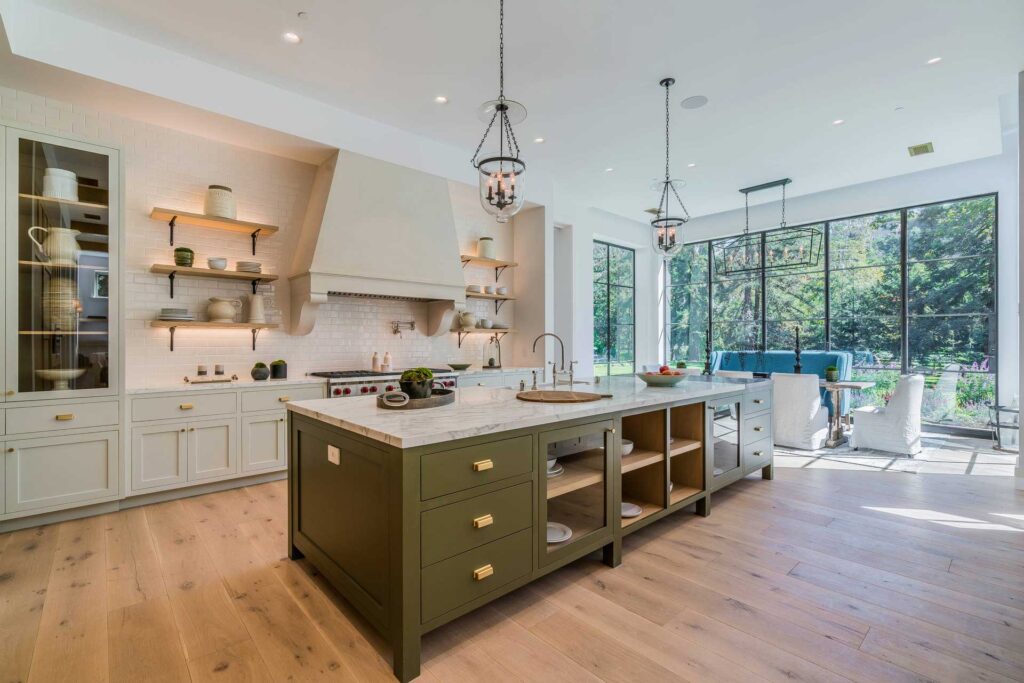
Why are bronze windows suitable for heritage buildings?
Bronze windows are an ideal fenestration option for any heritage or reproduction building that would traditionally have had metal windows – so those Spanish, French and Dutch revival-style buildings, and especially Georgian, early Victorian and Queen Anne architecture, or reproductions thereof.
Narrow sightlines
These types of buildings would traditionally have had forged steel casement windows with small, leaded lites creating narrow sightlines to maximize the amount of sunlight getting through. In latter years, glass panes got bigger but the very narrow sightlines stayed the same, and are key to achieving the very refined and elegant look of most period architecture leading up to the 19th century.
Owing to its supreme strength and ductility, bronze can be extruded into very slim profiles without any loss of structural integrity, allowing us to produce windows and doors with the narrowest sightlines of any metal, including steel. Despite their delicate appearance, our windows pack a punch on performance – our frames are thermally-broken for advanced energy efficiency, with proprietary nail fin design that facilitates advanced waterproofing and aesthetics in heritage properties.
Heirloom quality
Restoring a heritage home is always a labor of love, driven by a desire to preserve its architecture, character and history for future generations. Therefore it’s vital to select materials that will stand the test of time, honoring the craftsmanship and attention to detail that makes these buildings so special in the first place.
With its innate hardness and natural corrosion resistance, bronze is the ideal material for heirloom quality windows capable of withstanding almost anything that time and the elements might throw their way.
Even in coastal locations, bronze windows will deliver decades, if not over a century, of reliable performance. By contrast, steel windows might need to be replaced every few decades – and every time such a major renovation is required, a little more of the building’s original character will inevitably be lost.
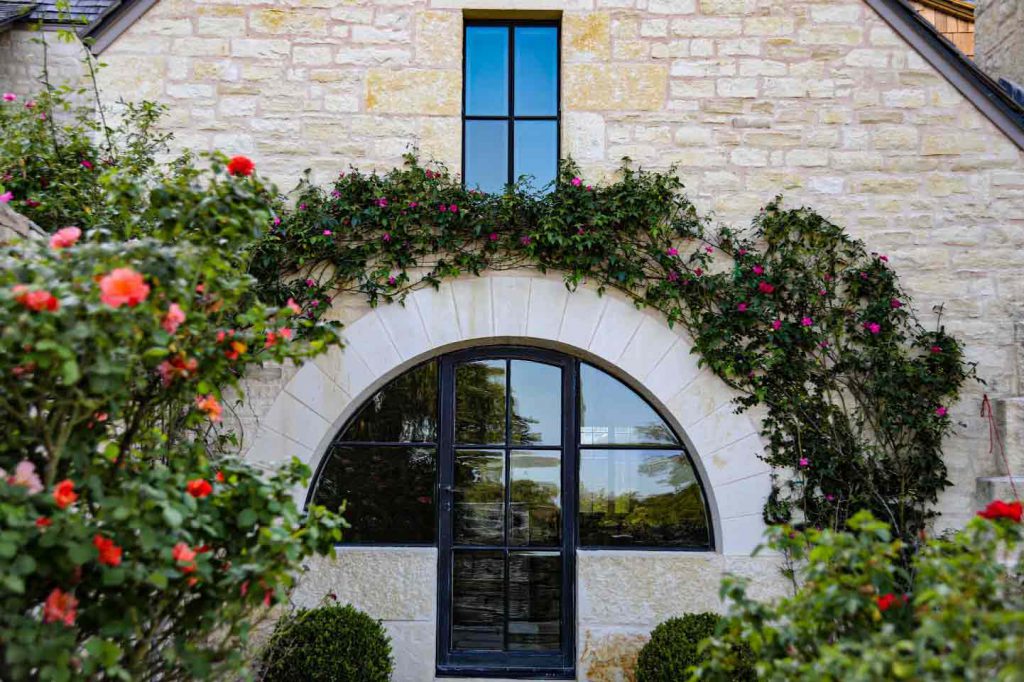
Custom design
If there’s one thing heritage architecture isn’t, it’s conventional. Even Georgian buildings with their distinctive symmetry often have windows of different sizes on different floors, where later revival-style architecture is often replete with idiosyncratic features that can make fenestration design for restoration or redevelopment of these properties a challenge.
At Renaissance Genuine Solid Bronze, our bronze windows and doors are manufactured to order, so every installation is completely unique. This means that if you have a series of unequal-size apertures needing new windows, or you want to replicate the style and shape of original windows in a new extension, we can do that.
We’re experienced in creating one-off windows and doors for unique projects, and our engineers routinely work with architects and designers to bring their vision to life.
Got a heritage project in the pipeline?
We’d love to discuss your fenestration needs and explore the options available when you choose bronze windows. Our custom bronze windows typically come in at just 10-15% more expensive than the steel equivalent and offer an extended lifespan with little or no maintenance required.
Get in touch with our team today to find out more.
